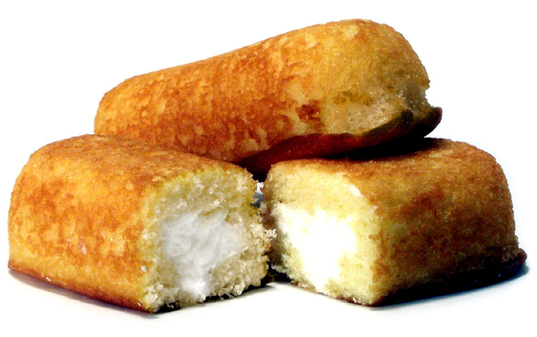|
The Breadcrumbs widget will appear here on the published site.
Confessions of a Twinkie
By Natalia Arancibia
QuailBellMagazine.com At the age of five, I was enrolled in a Catholic grade school—the same school my older sister was attending. It was a small private school that ranged from kindergarten to eight grade consisting of two old buildings made of fading red brick connected by a hallway on the second floor. One side held primary classrooms (kindergarten through third grade) while the other side held secondary classrooms (fourth grade through eighth grade). The school was run by a group of nuns (though not all the teachers were sisters of the religious order) whose convent was located next to the secondary building. A church stood directly across from the primary building and it was this church’s pastor who oversaw the whole establishment. It was hard to ignore the overwhelming religious influences at the school. After all, that was the purpose of sending your children there—to raise them in the Catholic faith—but there was something else that caught my attention during the second half of my nine years there. The school’s population was almost entirely white, and I was one of just a few minority students. From the time I started at the school, my race did not seem significant. I was quite young, after all, and skills like writing and reading were the main focus of the curriculum. It was not until a few years later, when I was nine or ten, when I realized I was not like most of my classmates. It began in my religion classes when we discussed God’s love for every person no matter their differences. Up until that point, I had often classified these “differences” as various tastes in music, favorite movies or books, number of siblings, and overall likes and dislikes. I had been applying the term superficially to my classmates yet I quickly realized that “differences” also meant appearance or, more specifically, race. Looking at my friends, my classmates, and even my teachers, I began to take note of our external differences. In a class of about 60, there were only three other students who shared my external features—my tanner skin, my darker hair—and one who was darker skinned than we were. We five were the only minorities, and I myself was labeled a Twinkie. My time at Catholic grade school remains the only point in my life that I have ever been labeled a Twinkie. After all, a Twinkie is a snack and I am a human being. Thinking on this description further and asking my sister what this meant, I saw myself, for the first time, in a different fashion. Like a Twinkie, my skin is a golden yellow shade; our exteriors are similar in tone. It wasn’t so much the color similarity that offended me but rather, what being labeled a Twinkie implied about my character. My Hispanic skin was yellow like a Hostess Twinkie, but my insides—my actions, my behavior, my overall comportment—were considered white like my classmates, like the creamy custard filling of the snack. I only heard the term Twinkie spoken once by a couple of white affluent boys in my grade. (A similar term I heard was the word Oreo applied to an African American student.) Despite this comment, I never once felt that the label changed how my classmates treated me. To them, I was simply Natalia—their classmate and friend. But this memory has always been a prominent bother in my life. At the time, looking Hispanic seemed fine because the way I acted matched how a white person would act. More specifically, how I acted made up for my skin being slightly darker than that of my classmates. Now, years after the event, I have yet to fully understand what “acting white” meant to my grade school peers, but I have some guesses. For one, kids at that age probably had a skewed image of what a “typical” Hispanic person was like. They might have expected me to speak broken English when in fact, I was born in the United States and grew up in a bilingual household learning both English and Spanish together. They also might have expected my family to be part of the lower socio-economic class. I was once asked if I attended the school through the assistance of a scholarship when in reality, my parents paid tuition for my sister and me with relative ease. That is not to say that I grew up wealthy. In fact, most of my classmates were probably better off than my own family, but my race did not mean my family was too poor to send me to Catholic school. Race does not automatically imply an attribute or characteristic. Rather, we as individuals apply our own ideas about race to someone of a specific color. Though my incident in grade school was over a decade ago, there is still something to be said about a child’s view and understanding of different races and how this comes to be. It is not enough to say that children will learn racial differences on their own or that they will realize racial stereotyping is wrong. Instead, children like those who labeled me a Twinkie should be taught that skin color does not make a person; characteristics do not belong to a single race.
#Real #Essay #Religion #Personality #Childhood #School #Ethnicity
Visit our shop and subscribe. Sponsor us. Submit and become a contributor. Like us on Facebook and follow us on Twitter. Comments
Lidia A. Pareja
5/5/2015 10:01:20 am
Excellent article
Jenny Nguyen
5/6/2015 03:16:00 am
So relatable! Great piece Natalia.
Carmen Merlos
5/7/2015 05:41:27 am
Great Article! Comments are closed.
|
|










